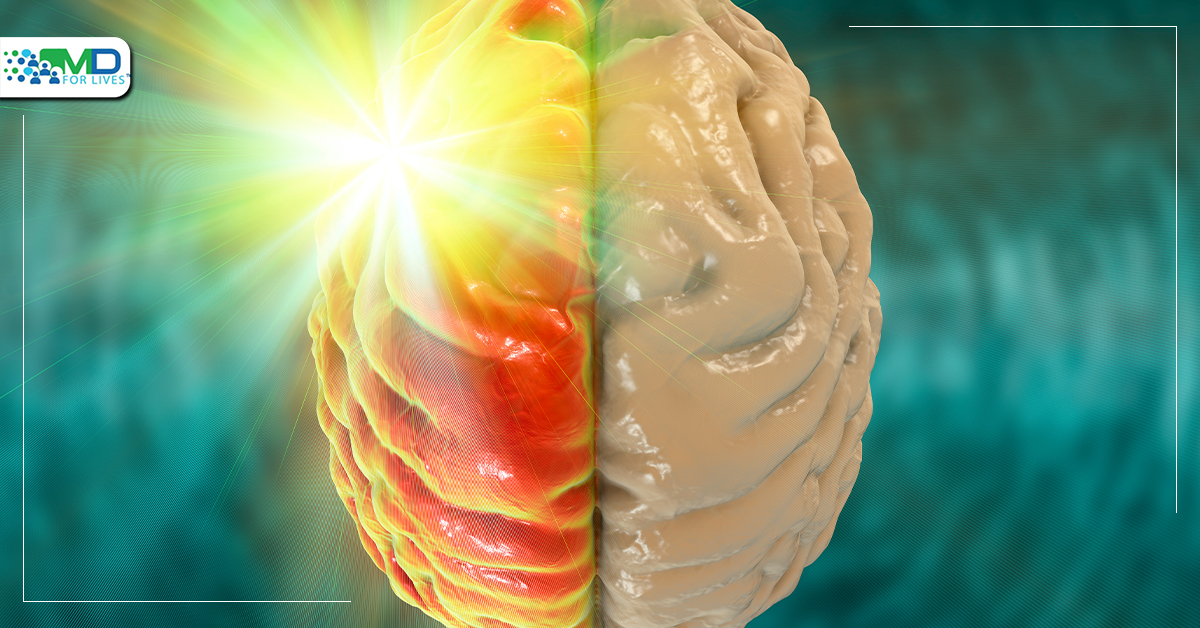Migraine with aura – A recurring headache that comes along with sensory changes like partial vision loss, visual flashes, or ringing in the ears can be difficult to treat. A recently published study provides evidence that an existing drug called erenumab can be useful in preventing migraine with aura.1
Migraine with aura affects a subset of migraine patients
Roughly 12% of the general population experiences migraines.2 About one-quarter to one-third of people with migraines also experience auras, which can begin several hours before or alongside the headache itself.2
A visual migraine aura can include visual symptoms like flickering lights, lines, or blind spots, which can be debilitating especially if they interfere with normal vision. Auditory and sensory disturbances like sounds, tingling, and numbness or even motor weakness on one side of the body can also occur as part of the aura.2

Existing migraine therapies are generally either acute medications or preventive treatments. Acute migraine-specific medications like triptans are used to abort (stop) a migraine attack. Preventive therapies include topiramate, amitriptyline, and propranolol.4
However, there is evidence that existing therapies have different effects in patients with aura compared to those without, and there are no well-established treatments that target aura symptoms.5
Erenumab for migraine
Erenumab is a monoclonal antibody that blocks the calcitonin gene-related peptide (CGRP) receptor. CGRP is thought to play a key role in generating migraines; by blocking the receptor for this neuropeptide, erenumab can reduce the frequency of migraines.1,2,4
Since 2018, erenumab has been FDA-approved for use in preventing migraine; however, it has not been clear if it is equally effective in patients who have migraine with aura or in blocking aura symptoms.1,3

Erenumab is an injectable drug administered once per month, and patients can self-administer the injections at home. The drug is sold as Aimovig by Amgen.3
Secondary analysis investigates erenumab for migraine with aura
In an article published in December 2021 in JAMA Neurology, researchers analyzed the data from four randomized, double-blind, placebo-controlled clinical trials of erenumab in migraine. In this post hoc secondary analysis, researchers found that in patients who experience an aura, erenumab was more effective than placebo in both reducing the frequency of migraines and the frequency of using migraine-specific drugs to treat acute migraine symptoms.1
The trials included a total of 2682 patients. Among those with episodic migraine and a history of aura, the proportion of patients who achieved at least a 50% reduction in monthly headache days was 32.3% with placebo, 44.5% with 70 mg erenumab, and 45.6% with 140 mg erenumab. This compares with 24.8%, 36.8%, and 50.6%, respectively, of the patients with episodic migraine and no history of aura.
Drug safety in the context of migraine with aura
Patients who experience migraine with aura have an increased risk of stroke and other cardiovascular and cerebrovascular events. Some pharmaceuticals are considered less safe for people who experience migraine visual aura or other aura symptoms. For example, hormonal contraceptives are thought to further increase cerebrovascular risks among women who experience migraine with aura.6

The authors of the December 2021 article considered whether erenumab might pose any additional safety risks for these patients due to the drug’s effect on the vascular system. Based on the results from the four previous studies included in the reanalysis, the authors found no additional risks, and the rates of adverse events were similar among those who received erenumab vs placebo and among those who did or did not experience aura.






